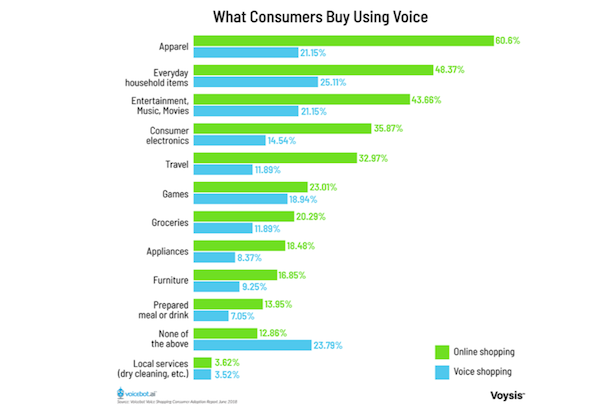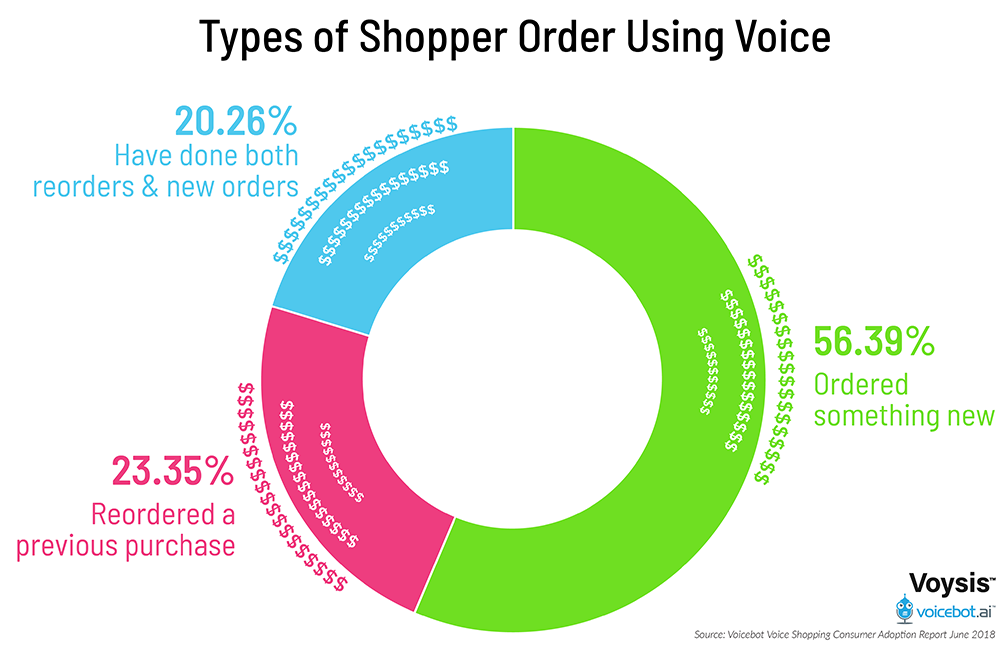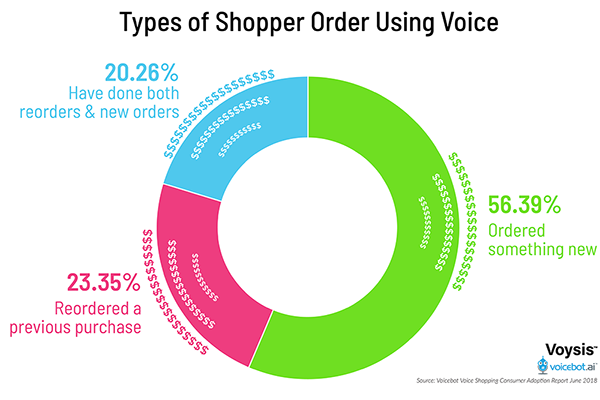Household Items and Apparel Are Top Voice Shopping Categories, First Time Purchases Common
U.S. adults say they most frequently purchase apparel, everyday household items and entertainment/music/movies when shopping online. Voice shoppers claim almost identical preferences with everyday household items edging out apparel. The Voice Shopping Consumer Adoption Report sought to determine the level consumer use of voice assistants in shopping and how their activities were similar or different from other digital shopping channels. We found that voice shopping characteristics were very similar to other online practices.

Consumers were free to respond to questions about voice shopping if any part of the purchase process was conducted by voice. That means product search and comparisons, price and availability, adding to a cart for checkout and consummating a transaction were all considered voice-assisted shopping and part of the overall purchase process. One category that voice shoppers were relatively more likely to shop by voice than on the web is when purchasing games. The other categories suggest that voice shopping is following the familiar patterns of online shopping overall.
First Time Purchases More Common Than Reorders
Another surprising finding was that voice shoppers reported placing more orders for items they had not previously purchased than reorders. Over 56% said they had ordered something new using voice while only 23% reported using voice for reordering a past purchase. Another 20% said they had used voice for both reorders and new orders.

The mental model most people have about voice shopping is on a smart speaker which doesn’t have a screen. That leads many people to assume reorders of previous purchases are a better fit for voice shopping. Amazon made reordering past purchases for Prime members a key feature of its initial Echo smart speaker product launch. However, voice may be particularly useful for new purchases for product search, comparison and price discovery. And, voice shopping activities on mobile significantly outpaces voice shopping through smart speakers. In those scenarios, voice shoppers are engaged in a multimodal experience where voice complements visual images. Ryan MacInnis, Director of Marketing for Voysis, a report sponsor, commented:
“While voice in the home makes incredible sense for reorders and every day items, we’ve seen the discoverability factor of using voice drive more first time purchases. Consumers are exploring all categories, including apparel, to shop with their voice.”
What the data tell us is that many common assumptions about voice are not supported by initial empirical evidence. Voice shopping is not being directed at product categories that are different from visual shopping methods. Current consumer activity appears to be similar on a relative basis for both digital shopping channels. And, voice is being used for new purchases sometimes despite the lack of a screen and other times as a complement to visual shopping methods. To learn more about how consumers are using voice assistants to shop today presented in 25 charts and 30 pages of analysis, you can download the full Voice Shopping Consumer Adoption Report here.
Monthly Voice Shoppers on Smart Speakers Rose Sharply in Early 2018
Smart Speaker Users Pass 50 Million in U.S. for the First Time









